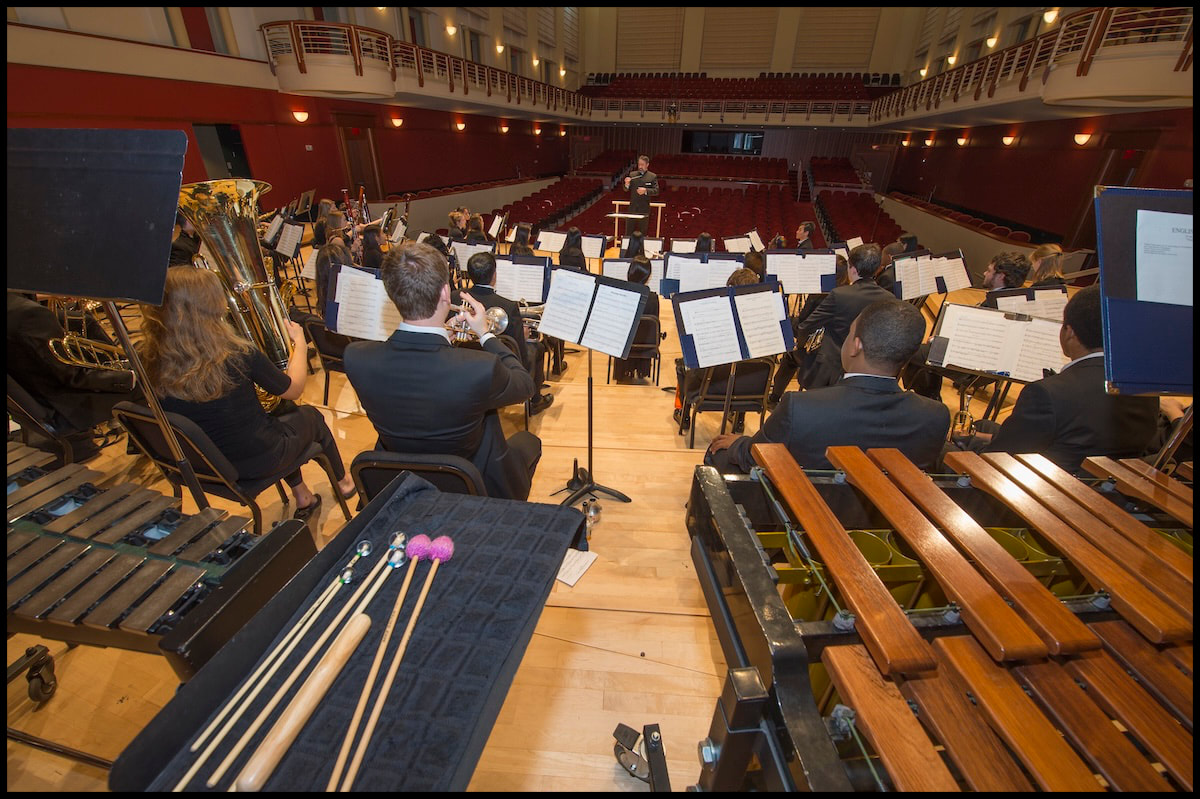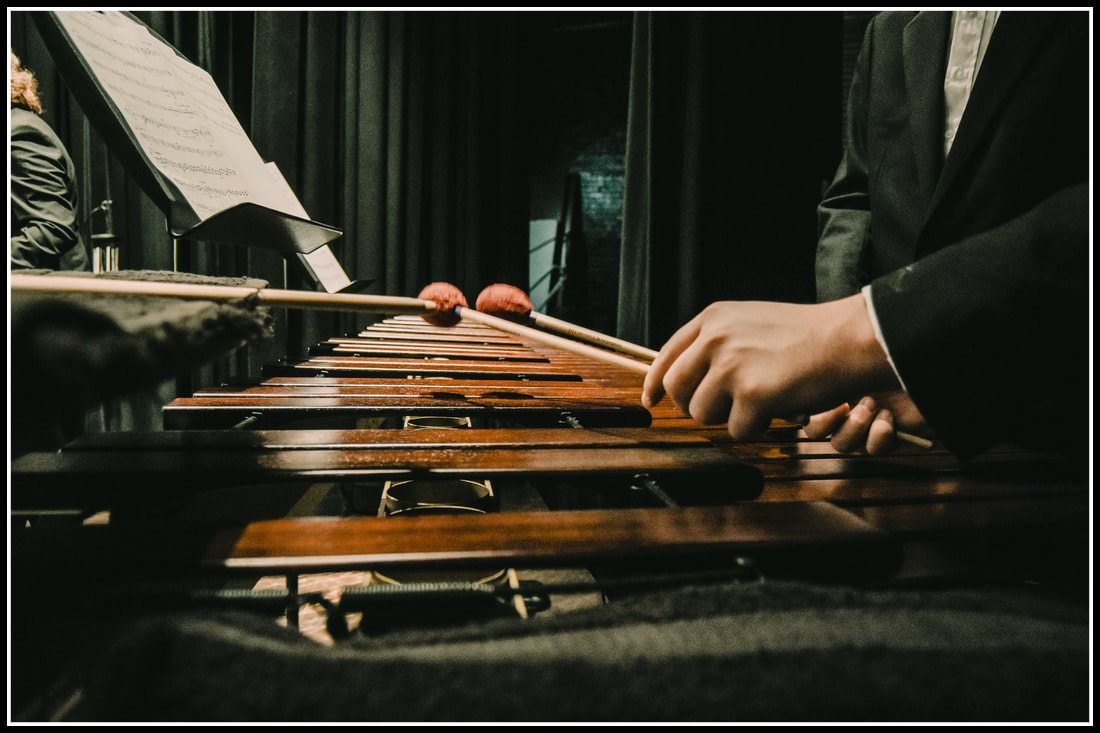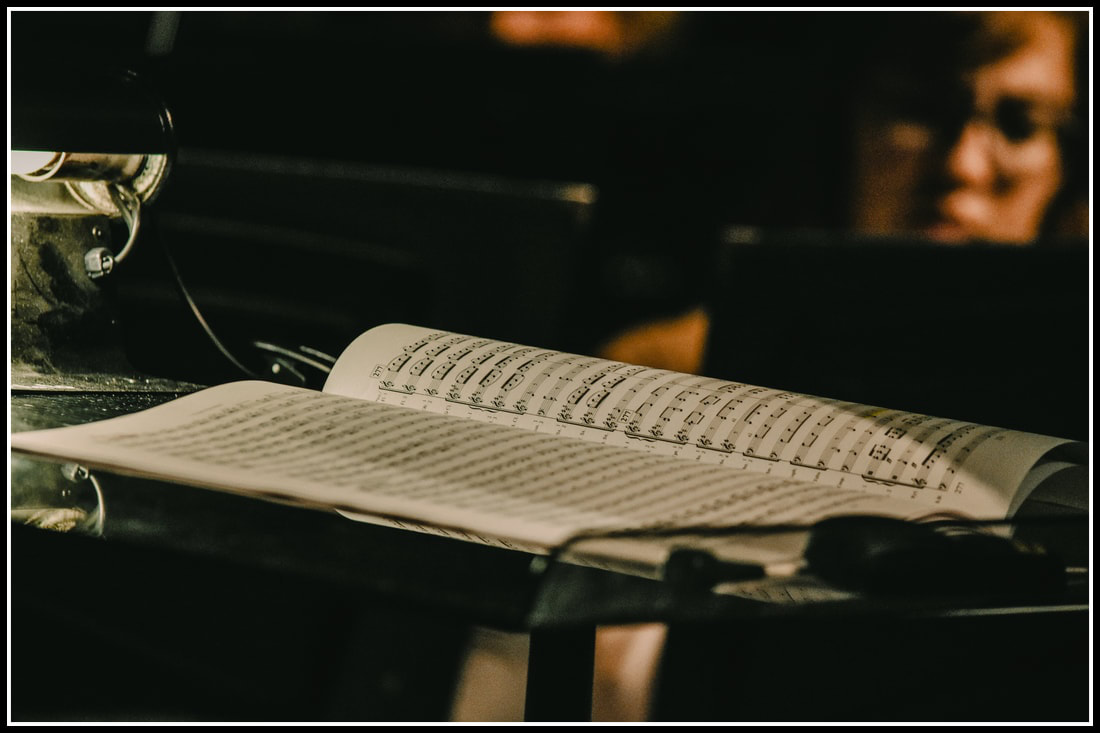|
The following “rules of etiquette” have been compiled from myriad sources, both professional and amateur, encompassing decades of performing (and life) experience by some of the best musicians in our history. While many of these guidelines deal with your experiences as an ensemble member, you may find them equally helpful in guiding you through other academic courses, interactions with professors and administrators, dealings with peers and colleagues, and life in general. These guidelines form the backbone of nearly everything we strive to become as professionals, in any field of endeavour. Learning these simple maxims ensures that you consistently come across as a professional in all of your dealings with others, be it a rehearsal, a performance, or even day-to-day academic and personal interactions. GENERAL REHEARSAL ETIQUETTE If at all possible, try to secure your folder/music before the first rehearsal of any given concert sequence, and begin preparing your part in advance. Check for tricky rhythms, look up any unfamiliar musical terms, write in cues or available rehearsal notes, phrases, alternate fingerings, etc., and read through the music (even if you only have enough time to do one read-through). You should never sightread a part in a rehearsal, unless you simply did not have access to the music beforehand. Of particular importance is numbering your measures: Rehearsals move briskly, and it will save you quite a bit of time and grief if all of your measures are clearly numbered and you are able to locate them quickly and efficiently. Rehearsal is for the “big picture” ideas - musicality, phrasing, interpretation, and communication. Rehearsal is where you learn everyone else’s parts. Practice, which should take place on your own, is where you do the nitty gritty work: learning notes, tricky rhythms, articulations, etc., so that we as an ensemble may get on with the business of creating beauty. In the cutthroat world of music performance, gigging musicians who show up not knowing their parts don’t get called back. Show up to each rehearsal as early as your schedule allows, giving yourself enough time to get settled and get your instrument together and properly warmed up prior to the first downbeat. It is expected that when rehearsal begins you are already in your seat with all necessary materials (music, mutes, extra reeds, miscellaneous equipment) ready to go: If you are not, you are considered tardy. Players who consistently walk in at 11:59am for a 12:00pm rehearsal are a major source of irritation and frustration for those who are professional and considerate enough to come early. They may never tell you this, but you are casting an impression of your character that will be hard to break later in life. Make it a habit to always be early and well-prepared. Have a constructive attitude, no matter how you feel, or how your day has been. You could be working hard hours under the hot sun, or any one of a hundred other very difficult jobs, but instead you get to make music with your colleagues. Treat the rehearsal as an oasis – respect your peers, the conductor, and most of all, respect the music you get to make. Have good hygiene, use deodorant, keep your shoes on, wear appropriate clothing, remove baseball caps or hats, etc. Keep perfume and cologne to a minimum - many will appreciate none at all. You certainly do not have to go back to “old school” days and wear a suit and tie or dress for rehearsals, but you should not treat rehearsals like movie night or a party with friends...we are here to work. Your non-musical accessories (phone, keys, wallet, etc.) belong in your case/purse/bag, not on your stand, waiting to tip over and clatter to the floor. Your phone should never be on your stand, especially if you are using it as a tuner while playing (all you are doing is training your ears to stop actively listening and this is, in the long run, hampering your ability to grow as a musician), not to mention the distractions a phone causes as banners and alert messages flash across your screen. Avoid “shadow practicing” by tapping, silent fingering, humming, whistling, etc. It is noisy, annoying to your colleagues, and reveals that you did not learn your part. Similarly, do not tap your foot for tempo or conduct along with the music. Music requires concentration, and even barely noticeable things can be amplified into major distractions for the ensemble members around you. When someone sitting near you has a solo or important passage, and you are not playing, sit still and do not make sudden moves. If you have to change a tuning, empty a water key, pick up a mute, etc., only do so if it is absolutely necessary and be as discreet as possible. Set the level of the music stand at a height that enables a clear view of the conductor’s beat as well as your music (if you have a directional instrument like a trumpet or trombone, make sure you are not playing directly into the stand). Your pencil is your best friend…do not make the same mistake twice because you “forgot.” Use your pencil to mark anything the conductor has called attention to: Alternate dynamics, key and meter changes, intonation adjustments, rhythmic and articulation issues...everything. Some young musicians believe it is “unprofessional” to mark up your sheet music – this could not be further from the truth! A quick perusal of parts in major professional performance ensembles would demonstrate that those professionals leave nothing to chance! Mistakes happen...when you make one (or someone near you does), do not let your body language or mannerisms reflect the mistake. Maintain a poker face. Often, you may be the only one who heard the mistake, and it does you no good to point out your error to everyone (especially the audience). If it was someone else’s mistake, chances are they know it and they know how to fix it – the last thing they need is someone piling on. Do not turn to look at the people around you while they are playing, and do not initiate or engage in conversation while the conductor is speaking or rehearsing another section. The only acceptable conversations during a rehearsal should be about issues regarding the music, and only at the appropriate times. Personal conversations of any nature are best saved for after rehearsal. When a conductor speaks to you, always acknowledge by making direct eye contact, and possibly an affirmative nod. If you feel the conductor is wrong about a musical instruction or interpretation, do not confront them in the rehearsal – speak to them privately during the break, or after rehearsal. Regardless of your opinion of the conductor, they are there to help guide you through the music, and deserve a modicum of respect. Be direct but friendly about fixing pitches or rhythms with colleagues. Do not be manipulative or mince your words, but nor should you be passive-aggressive. A simple, direct request or suggestion without rancor or malice is most often the best option. Also, be open to such suggestions from your colleagues! We are all working together to make the whole greater than the sum of its parts, and have much to learn from each other! Learn the difference between criticism (which is often used negatively) and critique (which tries to clarify and edify, not demean). During practice at home, make note of all key signature changes by marking reminder accidentals as needed to minimize playing wrong notes. Carefully work out notes and rhythms, and mark difficult sections in the music needing extra practice time. Allow extra individual practice time to master the difficult sections. Do not pack up before the end of rehearsal until you are officially dismissed…. you may still have more to play. If the conductor runs over the allotted time, don’t huff and puff, don’t roll your eyes, and don’t make faces. If you have another class that you must run off to, gather your things quietly and without calling attention to yourself. Odds are the conductor simply lost track of time, but if it becomes a habit, it is something you can discuss privately to ensure better communication. PERFORMANCE ETIQUETTE Always double check performance times, locations, and dress code. Plan to arrive early enough to warm up, and always give yourself extra time in case of traffic or other minor emergencies. If you are not familiar with the performance venue, plan to arrive significantly earlier in case you get lost or have trouble finding the location, an entrance, a working elevator, etc. Adhere to the stated dress code for the performance. Appearance goes a long way toward defining your image as a professional. All apparel should be of a formal rather than casual nature unless “casual” is specifically called for. Jewelry should be understated and minimal, watches should not be worn. If you do not already own decent-quality performance wear, invest in some. Make sure your mobile device has been left backstage, and that you have turned it off or have it set to “Airplane Mode” . . . many a performance has been marred by a cell phone ringing backstage. Keep the rest of your non-musical accessories in your case, purse, or bag, not on your stand or on the floor by your feet, where they can be knocked over, or otherwise make unnecessary clutter. As soon as you enter the stage, you are on display and in professional performance mode. Now is not the time to start playing high notes or fortissimo orchestral excerpts (especially if they are not on the concert that night). Do not practice your tough licks on stage over and over again right before the concert begins – you will just make yourself tense and fatigue your chops. Whenever possible, use practice mutes or buzz on your mouthpiece (within reason). Sometimes, a little mental run-through or a moment of meditation to acclimate to the stage is all that is needed. Do not turn a page during silence, unless absolutely necessary. If you must, lift the corner of the page so that it does not scrape against the stand. Also avoid nervous repetitive actions: Looking at a reed, adjusting your seat/stand, instrument adjustments, fixing your hair, or other actions that draw attention to yourself. The audience notices these types of actions. At the end of a piece, savor and take in the moment. Don’t be a gunslinger, eager to holster your weapon…take in the applause as a respectful acknowledgment of the audience. Do not immediately start fidgeting with the music, your instrument, or your stand. If the conductor is bowing, stay still but look at the audience in a way that makes it clear that you have enjoyed performing for them. If the conductor asks you to stand, do it quickly and turn your body towards the audience. Smile! Have a pleasant look on your face, no matter how the performance went. As the conductor leaves the stage, quickly (but not too quickly), exchange your music for the next piece. If you are moving to a new position, do so gently. There is plenty of time to maneuver yourself, your instrument, and your music into place. The conductor will wait a reasonable interval.
Be aware of - and sensitive to - other ensemble members’ line-of-sight to the conductor, especially if the performance venue is different than your usual rehearsal venue. Do your best to be accommodating. As with notes and rhythms, be direct and friendly if you yourself need an accommodation. Count the rests! If you have many bars of tacet, give a small hand or finger signal at all the important rehearsal letters, double bars, or the cues immediately before your next entrance. This allows all the players in the section to ensure they have the correct count. If you are not sure of the count, do not make a signal. With everyone counting carefully, no section should ever get lost. Please do not make your signals visible to an audience or even other sections, who may have different counts than you. And certainly don’t engage in games of one-upmanship in order to purposely confuse other musicians and their counts…this needlessly endangers the integrity of the music. Every time you are in public, an impression is being crafted, whether for the good or for the bad. This applies both to the music you play and to the statements you make to your colleagues. Do not start complaining about anything until you have left the building. Even then, make sure you know your audience and that what you say will not offend them or someone they respect. More importantly, keep in mind that the things you say out loud (or via social media, email, etc.) can often be traced back to you. Before you ever open your mouth (or log into your social media account) to criticize someone, think to yourself “...and then what?” If nothing good can come from your complaint, it is most wisely kept to yourself. Always keep the following checklist in mind before you say anything about another person, especially a colleague, peer, or supervisor: Is it kind? Is it true? Is it necessary? Finally – professionals not only demonstrate the above traits, but also expect and demand them from their peers and colleagues. Professionals understand that life is a series of “teachable” moments. How one approaches these moments will make a world of difference: Being rude or condescending in your demands for professionalism will accomplish nothing but resentment and anger. Expecting someone to know how to behave professionally without clear and concise explanations of why that is the desired standard will result in disappointment. If you can learn to clearly articulate the need for professionalism in an ensemble setting, it will be easier to educate those around you. We should always be striving to leave the world in a better state that we found it. = = = “Professionalism in Art has this difficulty: To be professional is to be dependable; to be dependable is to be predictable…and predictability is esthetically boring, an anti-virtue in a field where we hope to be astonished and startled and at some deep level refreshed.” – John Updike |
MeMusician. Educator. Conductor. Archives
April 2025
Categories |





 RSS Feed
RSS Feed